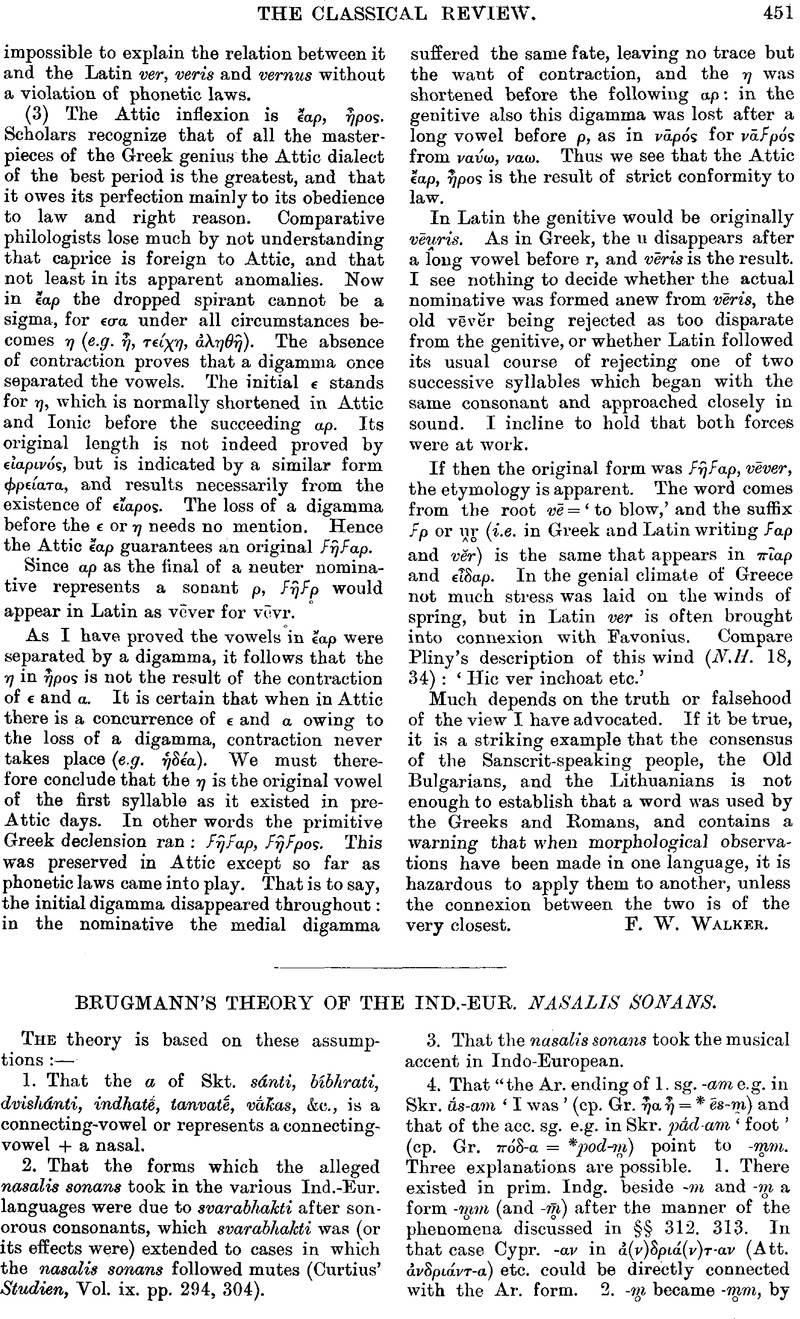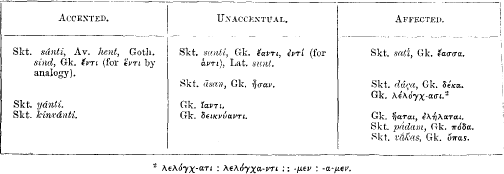No CrossRef data available.
Article contents
Brugmann's Theory of the Ind.-Eur. Nasalis Sonans
Published online by Cambridge University Press: 27 October 2009
Abstract

- Type
- Review Article
- Information
- Copyright
- Copyright © The Classical Association 1891
References
page 452 note 1 Thus ἒδειξ-α: abodhish-am:: ἒδειξα-s:abodhish-ī.s:: ἒδειξε: abodhish ī-t. We cannot compare ἒδειξ-αν with abodhish-us, until more is known of the Skt. 3rd plur. -us.
It is highly probable that Gk. -α came always from -αν and not directly from -αm. Consequently there is no certain case of final so-called ![]() or
or ![]() being directly represented by a vowel, except the Lith. matere.
being directly represented by a vowel, except the Lith. matere.
Brugmann's equation (Grundr. § 287) ![]() : sthātúr: = dáša:
: sthātúr: = dáša: ![]() is unsound; for the -a of Skt. d´ça is for -an. Gk. and Skt. also agree in retaining both vowel and nasal in the secondary 3rd plur. act. suffix m(t) after consonants, e.g. āsan,
is unsound; for the -a of Skt. d´ça is for -an. Gk. and Skt. also agree in retaining both vowel and nasal in the secondary 3rd plur. act. suffix m(t) after consonants, e.g. āsan, ![]() which I therefore regard as unaccentual forms determined by old enelitic use, but the retention of the nasal consonant may be due to the analogy of strong aorists, the tense-stem of which ended in a vowel.
which I therefore regard as unaccentual forms determined by old enelitic use, but the retention of the nasal consonant may be due to the analogy of strong aorists, the tense-stem of which ended in a vowel.
Compare the above paragraph of the text with the spaced paragraph, Curtius' Studien, Vol. ix. p. 294. 
page 452 note 2 λελóγχ-ατι: λελóγχα-ντι:: -μεν: -α -μεν.
page 453 note 1 Indo-European Vowel-System, by Fennell, C. A. M., Litt., D., Cambridge, E. Johnson, 1891, pp, 33. Eighteenpence.Google Scholar
page 453 note 2 Dr. Brugmann gives my explanation of pîvarī, pīvará- in vol. ii. § 74, pp. 182, 185, thus confirming my criticism.




